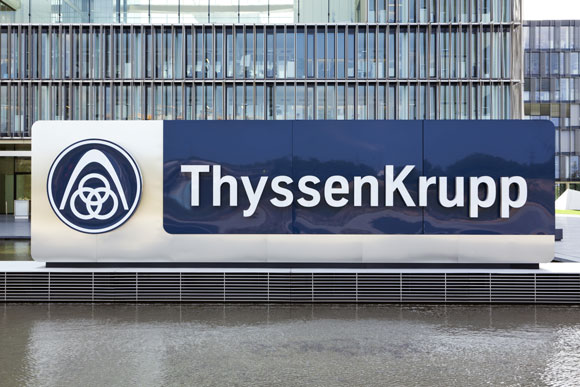Germany’s ThyssenKrupp mulls steel division spinoff

German steelmaker ThyssenKrupp must be desperate to get rid of its steel business.
The steelmaker makes a great range of products of world-class quality. The brand has undeniable strength as a result.
However, it has not and cannot make money from it.
ThyssenKrupp steel division posts losses
The ThyssenKrupp steel division lost money last year.
Quite how much is difficult to say.
However, the Financial Times reported last year the firm predicted losses of a billion Euros for 2020. That is a not inconsiderable proportion of total group losses of more than €5.5 billion reported by the Financial Times this week.
The same article reports the group’s proposal to spin off the steel division as a separate entity, apparently in the expectation it would be easier to raise investment as a standalone unit.
Do you know which market conditions are best with different steel contracting mechanisms? Check out our best practices on this topic.
Previous efforts
Efforts to sell or merge the steelmaking division with competitors in recent years have failed repeatedly.
What appeared a viable solution — a merger with Tata Steel’s European steel business failed after E.U. competition regulators blocked the move in 2019. Media and trade rumors about a possible merger with Sweden’s SSAB and domestic rival Salzgitter have equally come to nothing.
A speculative approach by Liberty Steel is said to be under assessment but, in reality, is unlikely to materialize.
Liberty Steel’s approach
ThyssenKrupp would be a mighty bite to swallow, even for the ever-ambitious Sanjeev Gupta, owner of Liberty Steel.
Liberty doesn’t have the financial strength to carry €1 billion annual losses — even if it could, eventually, turn the business around.
German workers’ representatives are also said to have objected to the approach, fearing job losses. Workers carry a lot of clout in regional German politics, especially in an election year.
Needed investment for ThyssenKrupp steel division
The steel division needs investments of approximately €570 million a year, the Financial Times reported, just to keep it running. In addition, it needs a further €800 million over the next five years to modernize its facilities.
That is likely before what looks like will be a gradual ramp-up to decarburization for the whole European steel industry over the next 10 years. Some European competitors are already investing heavily down that path. A rising carbon tax would weigh on a business of ThyssenKrupp’s size and perilous finances if it was not actively taking steps to mitigate its footprint.
European regulators may yet regret not allowing the Tata merger to go ahead.
It was no guarantor of profitability, but scale counts in steel. The combined business may have attracted much-needed investment as a standalone business.
Who will ride to the rescue remains to be seen.
The German state seems to have been ruled out, but E.U. state-aid rules permitting Berlin may yet be on the hook for some kind of support until a viable future can be found.
We know what you should be paying for metals — MetalMiner should-cost models are the ultimate savings hack by showing you the “should-cost” price for gauge, width, polish and finish adders. Explore what value they can add for your organization.



Leave a Reply